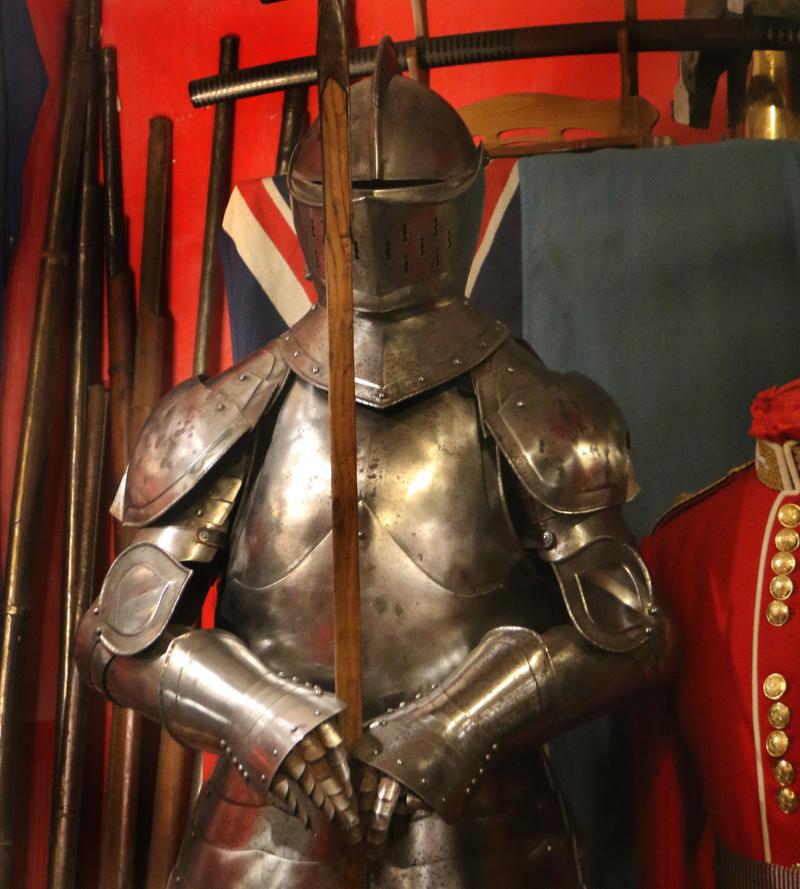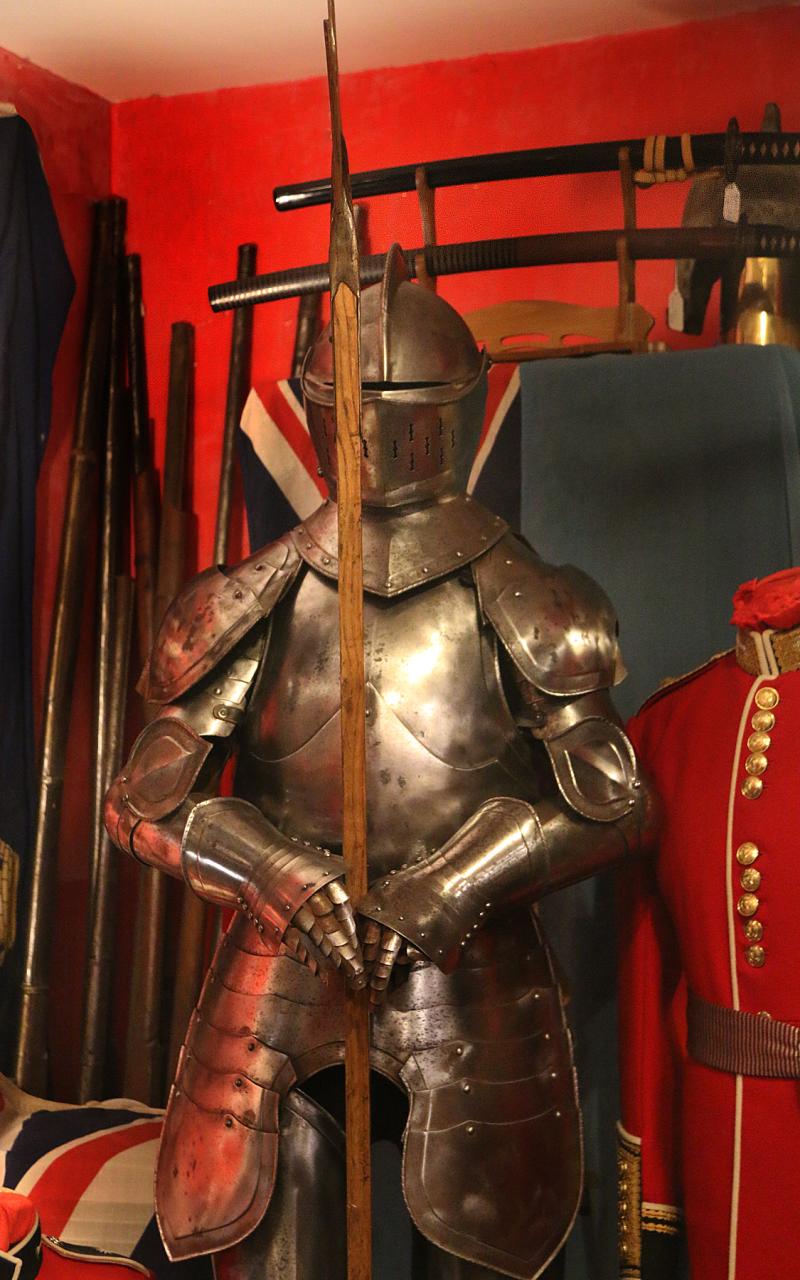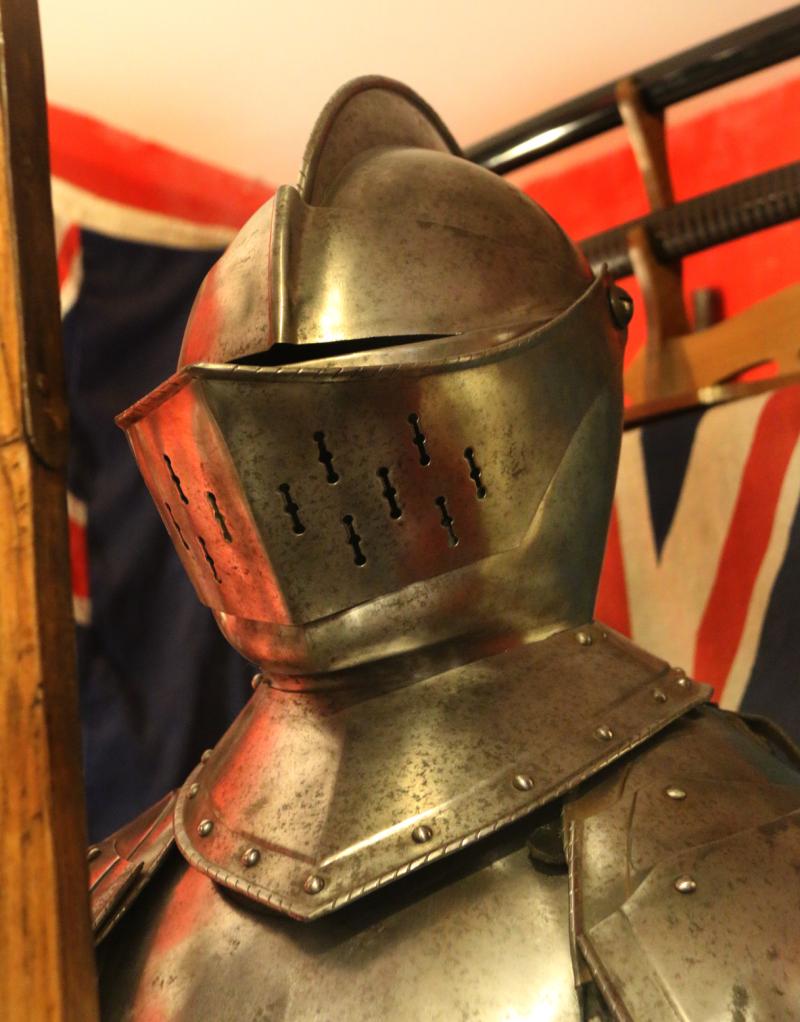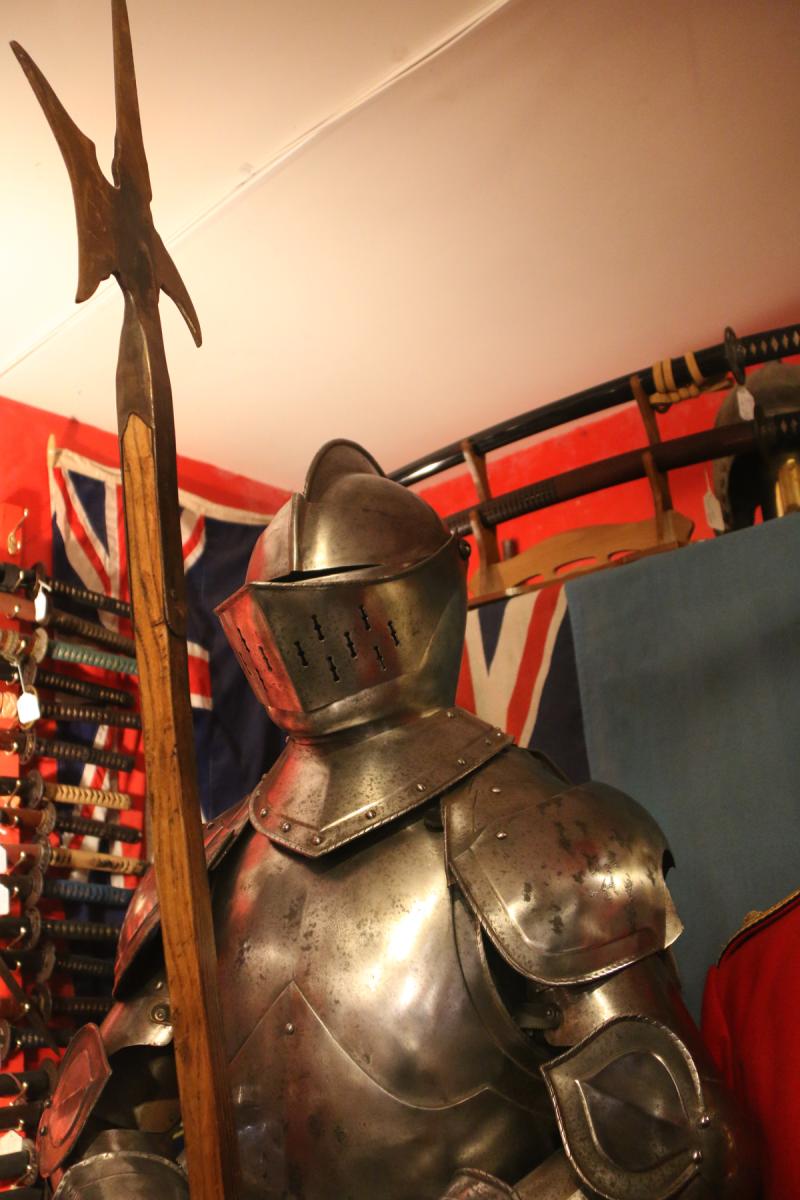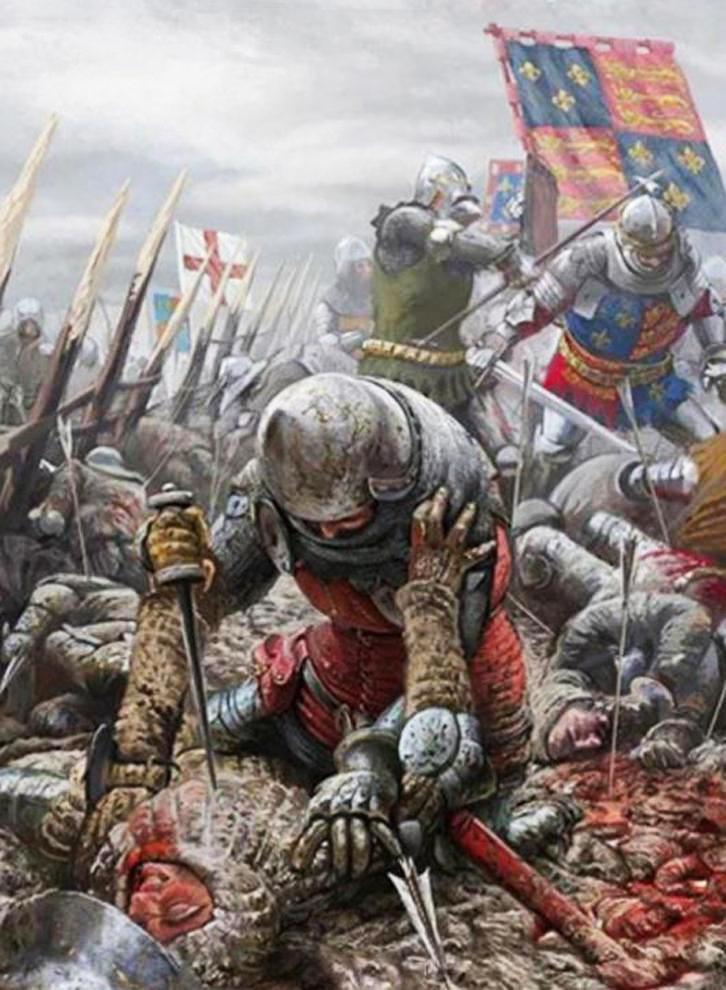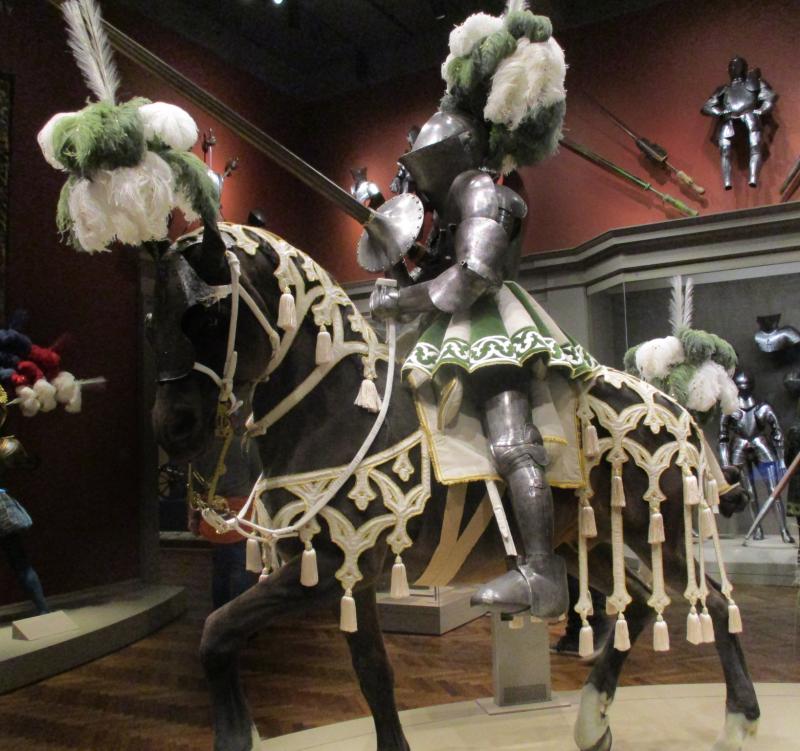A Beautiful Full Suit of 16th Century Tudor Style Knight’s Historismus Plate Hall Armour with Halbeard Polearm. Fully Leather Strapped & Buckled So Likely, and Potentially, Wearable
Historicism or also historism and historismus comprises artistic styles that draw their inspiration from recreating historic styles or imitating the work of historic artisans. This is especially prevalent in architecture, such as revival architecture. Through a combination of different styles or implementation of new elements, historicism can create completely different aesthetics than former styles. Thus it offers a great variety of possible designs.
In the history of art, after Neoclassicism which in the Romantic era could itself be considered a historicist movement, the 19th century saw a new historicist phase marked by an interpretation not only of Greek and Roman classicism, but also of succeeding stylistic eras, which were increasingly considered equivalent. In particular in architecture and in the genre of history painting, in which historical subjects were treated of with great attention to accurate period detail, the global influence of historicism was especially strong from the 1850s onwards.
Plate armour is a historical type of personal body armour made from bronze, iron, or steel plates, culminating in the iconic suit of armour entirely encasing the wearer. Full plate steel armour developed in Europe during the Late Middle Ages, especially in the context of the Hundred Years' War, from the coat of plates worn over mail suits during the 14th century.
In Europe, plate armour reached its peak in the late 15th and early 16th centuries. The full suit of armour, also referred to as a panoply, is thus a feature of the very end of the Middle Ages and the Renaissance period. Its popular association with the "medieval knight” is due to the specialised jousting armour which developed in the 16th century.
Full suits of Gothic plate armour were worn on the battlefields of the Burgundian and Italian Wars. The most heavily armoured troops of the period were heavy cavalry, such as the gendarmes and early cuirassiers, but the infantry troops of the Swiss mercenaries and the Landsknechts also took to wearing lighter suits of "three quarters" munition armour, leaving the lower legs unprotected.
The use of plate armour began to decline in the early 17th century, but it remained common both among the nobility and for the cuirassiers throughout the European wars of religion. After the mid-17th century, plate armour was mostly reduced to the simple breastplate or (cuirass), worn by cuirassiers. This was due to the development of the musket, which could penetrate armour at a considerable distance. For infantry, the breastplate gained renewed importance with the development of shrapnel in the late Napoleonic wars.
Plate armour gave the wearer very good protection against sword cuts, as well against spear thrusts, and provided decent defense against blunt weapons.
The evolution of plate armour also triggered developments in the design of offensive weapons. While this armour was effective against cuts or strikes, their weak points could be exploited by thrusting weapons, such as estocs, poleaxes, and halberds. The effect of arrows and bolts is still a point of contention with regard to plate armour. The evolution of the 14th-century plate armour also triggered the development of various polearms. They were designed to deliver a strong impact and concentrate energy on a small area and cause damage through the plate. Maces, war hammers, and pollaxes (poleaxes) were used to inflict blunt force trauma through armour. Strong blows to the head could result in concussion, even if the armour is not penetrated.
Fluted plate was not only decorative, but also reinforced the plate against bending under striking or blunt impact. This offsets against the tendency for flutes to catch piercing blows. In armoured techniques taught in the German school of swordsmanship, the attacker concentrates on these "weak spots", resulting in a fighting style very different from unarmoured sword-fighting. Because of this weakness, most warriors wore a mail shirt (haubergeon or hauberk) beneath their plate armour (or coat-of-plates). Later, full mail shirts were replaced with mail patches, called gussets, which were sewn onto a gambeson or arming jacket. Further protection for plate armour was the use of small round plates called besagews, that covered the armpit area and the addition of couters and poleyns with "wings" to protect the inside of the joint.
Over the past century many visitors will have seen the numerous full suits of plate armour we have had the pleasure of displaying. 15th, 16th and 17th century originals, plus, historismus hall armours. Our most impressive, if some of you may remember, in the 1960’s, was a full suite of equestrian mounted ‘knight on horseback’ armour. And we displayed it in our shop just round the corner, in Prince Albert St, as it had 20 foot high ceilings. It looked just like the example we show as the last photo in the gallery of one such similar in a museum in America. This fabulous set was passed on to our friend and neighbour, the late arms dealer Paul Grafton, who owned the former ‘House of Correction’ for many years, and it occupied his whole shop!, but exceptionally memorable it was.
It was eventually passed on to Holland and Holland, we believe for their bespoke gun shop in London, and thence later, we understand, to an American billionaire who kept it next to his swimming pool, whereupon it became very wet and thus rusty. After that it travelled to New Jersey or Park Avenue, New York possibly, but we sadly lost track of it then
This beautiful full suit of Tudor hall plate armour is very likely circa to post 1900. We don't normally acquire or sell non original items but historismus pieces have always been desireable and most collectable in their own right.
It is offered complete with its bespoke fully fitted display stand as can be seen in the photographs. We can also facilitate bespoke hand delivery within the UK mainland by our own transport
Code: 24964
3950.00 GBP


